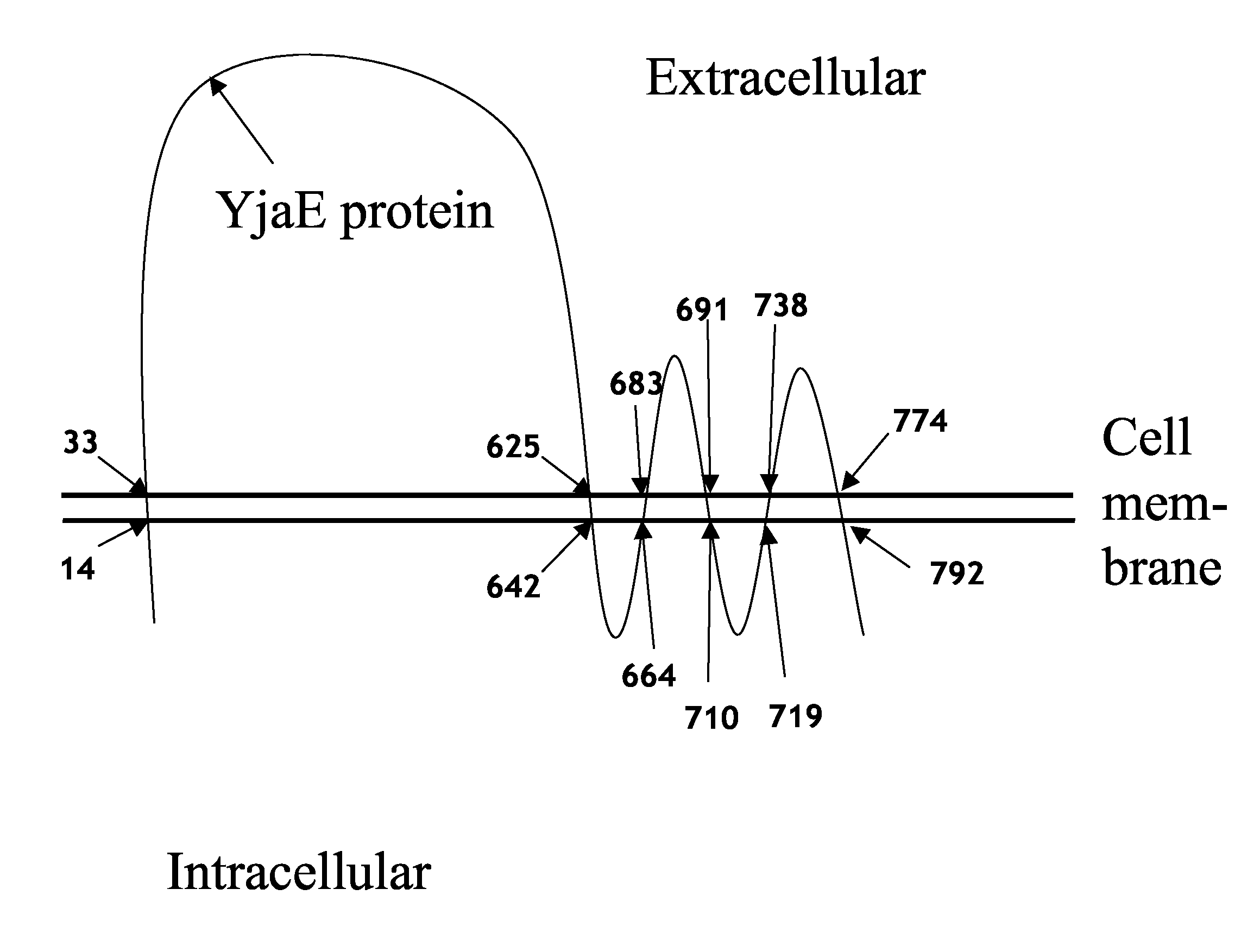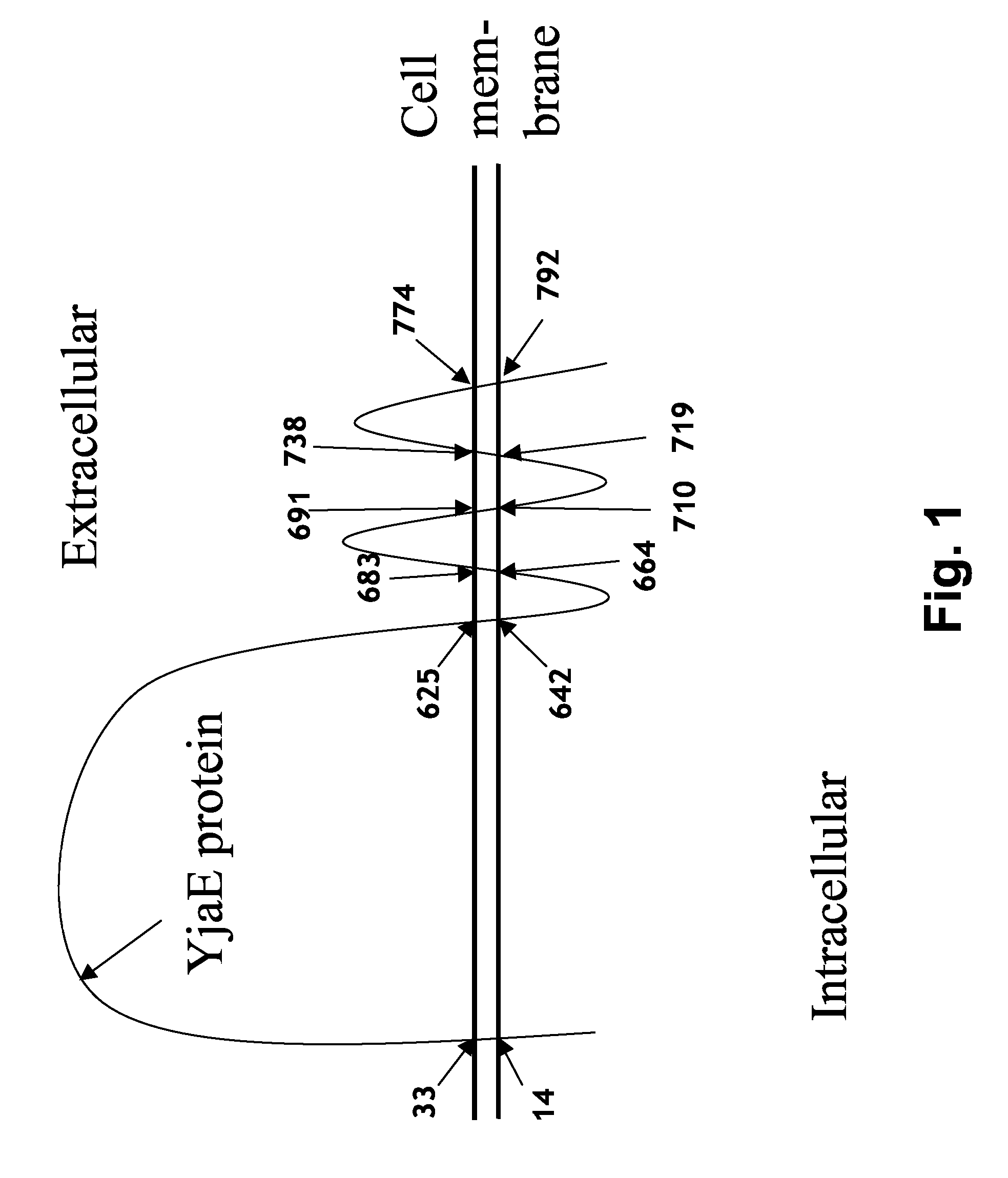Bacteriophage Resistant Lactic Acid Bacteria
a technology lactic acid, which is applied in the field of lactic acid bacteria, can solve the problems that it has not been possible to eliminate lactic acid contamination under these industrial conditions
- Summary
- Abstract
- Description
- Claims
- Application Information
AI Technical Summary
Benefits of technology
Problems solved by technology
Method used
Image
Examples
example 1
Inactivation of the yjaE Gene in Lactococcus Strains
[0102]Strains:
[0103]IL1403: Reference WO01 / 77334
[0104]CAa120:
[0105]Stuer-Lauridsen, B., Janzen, T., Schnabl, J., Johansen, E., 2003. Identification of the host determinant of two prolate-headed phages infecting Lactococcus lactis. Virology 309, 10-17.
[0106]Vectors:
[0107]pGhost vectors: For details see the articles
[0108]Maguin, E., Prévost, H., Gruss, A., 1996. Construction of food-grade mutants of lactic acid bacteria. Lait 76,139-146.
[0109]Biswas, I., Gruss, A., Ehrlich, S. D., Maguin, E., 1993. High-efficiency gene inactivation and replacement system for Gram-positive bacteria. Journal of Bacteriology 175(11), 3628-3635.
[0110]Description of Inactivation Procedure:
[0111]A PCR fragment of 650 bp was generated covering the middle part of the yjaE gene from nt 703 to 1344. The template used was chromosomal DNA from L. lactis CAa120, and the fragment was cloned into the vector pGhost9. The PCR fragment contained a unique BsrGI site wh...
example 2
General Method for Generation of Spontaneous Phage Resistant Mutants
[0121]This method can be used to obtain spontaneous phage resistant mutants with mutations in the yjaE gene as confirmed by DNA sequencing.
[0122]The desired strain is inoculated by a scrape from a frozen stock in 10 ml liquid media M17 (Oxoid CM0817, Oxoid Ltd., Basingstoke, Hampshire, England)+needed additives. In the present case needed additives are 0.5% lactose for strain CAa120 and 34 and 0.5% glucose for strain IL1403 and Bu2-60. The OD600 of the exponentially growing culture is monitored. When the OD600 of the culture reaches between 0.5 and 0.8, 100 μl of the culture is mixed with phages at a multiplicity of infection (MOI) of 1-10 phages per cell. Cells and phages are mixed in a total of 3 ml top agar (M17, 10 mM CaCl2, 0.75% agar) and poured onto plates (M17, 10 mM CaCl2, 1.5% agar) and incubated at 30° C. for one or two days. Most cells are killed by the infecting phages, but spontaneous phage resistant m...
example 3
Generation of Spontaneous Phage Resistant yjaE Mutants
[0125]Strains:
[0126]IL1403: Lactococcus lactis. Reference WO01 / 77334
[0127]CAa120: Lactococcus lactis. Reference Chr. Hansen Culture Collection. Stuer-Lauridsen, B., Janzen, T., Schnabl, J., Johansen, E., 2003. Identification of the host determinant of two prolate-headed phages infecting Lactococcus lactis. Virology 309:10-17.
[0128]Bu2-60: Lactococcus lactis. Wetzel, A., Neve, H., Geis, A., Teuber, M., 1986. Transfer of plasmid-mediated phage resistance in lactic acid Streptococci. Chem. Mikrobiol. Technol. Lebensm. 10:86-89.
[0129]Strain 34: Lactococcus lactis. Reference Chr. Hansen Culture Collection.
[0130]Strain CAa120 and 34 can be purchased from Chr. Hansen.
[0131]Description of Procedure:
[0132]The strains were taken through the procedure for generation of spontaneous phage resistant mutants as described under Materials and Methods, one strain and one phage in different combinations as follows: Strain 34 and p24, Bu2-60 and Φ3,...
PUM
| Property | Measurement | Unit |
|---|---|---|
| resistance | aaaaa | aaaaa |
| lactic acid | aaaaa | aaaaa |
| concentration | aaaaa | aaaaa |
Abstract
Description
Claims
Application Information
 Login to view more
Login to view more - R&D Engineer
- R&D Manager
- IP Professional
- Industry Leading Data Capabilities
- Powerful AI technology
- Patent DNA Extraction
Browse by: Latest US Patents, China's latest patents, Technical Efficacy Thesaurus, Application Domain, Technology Topic.
© 2024 PatSnap. All rights reserved.Legal|Privacy policy|Modern Slavery Act Transparency Statement|Sitemap



